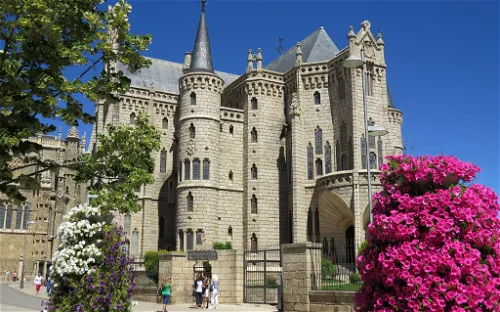Museo de los Caminos and its collection
The Museo de los Caminos, located in the Episcopal Palace of Astorga in the province of León, Spain, is dedicated to the Camino de Santiago. This museum offers a deep dive into the history and significance of this famous pilgrimage route.
Religious Art Collection
The Museo de los Caminos houses a variety of religious art pieces from the diocese, most of which are related to the pilgrimage. These pieces provide a visual narrative of the religious significance and history of the Camino de Santiago.
Historical Collections
The museum showcases a range of Romanesque carvings, a collection of goldsmithing from the 15th to the 18th century, and a collection of archaeological objects from the Roman and medieval period. These collections offer a glimpse into the artistic and historical richness of the region.
History & Anthropology Art & Design Archaeology Religion Religious building Medieval art & Early Renaissance art Renaissance art & Early modern art
#13 Art & Design in Castile and León #38 History & Anthropology in Castile and León #15 Archaeology museums in Castile and León #11 Medieval art & Early Renaissance art museums in Castile and León #11 Religion museums in Castile and León #8 Religious buildings in Castile and León #5 Renaissance art & Early modern art museums in Castile and León #132 Art & Design in Spain #89 Archaeology museums in Spain #52 Medieval art & Early Renaissance art museums in Spain #71 Religion museums in Spain #45 Religious buildings in Spain #38 Renaissance art & Early modern art museums in Spain















